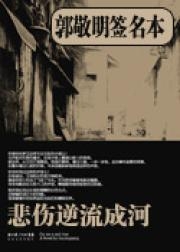|
Although youth literature is still relatively new, it has already gone far in terms of commercial publishing. Generally speaking, there are three main traits in today's youth literature market.
Popular writers lead the market
Best-selling books are one of the most vital tactics of commercial publishing; a well-known author guarantees a hit book. Profit-driven publishers always favor popular writers with a large fan base.
Take the situation in 2007, for example. Guo Jingming's books and magazines accounted for 15 percent of total price and more than 20 percent of total sales.
Mook have become popular

A "mook," short for "magazine book," is a publication in the format of a magazine but sold as a book originated in Japan.
In 2004, Guo's Island workshop published China's first mook, Island. The new format, colorful pictures and beautiful language made Island a hit with teenagers. Then in 2006, Guo launched Top Novel, which has since become the best-selling mook in China. Both Island and Top Novel signal the golden age of mooks in the youth literature field.
We can actually learn something from the success of mooks in youth literature.
First and foremost, the periodical form of mooks allows them to stay fresh and interesting, while also featuring regular columns that cultivate a loyal readership.
Second, almost all youth literature mooks are edited by popular writers, like Top Novel by Guo Jingming, GirlneYa by Guo Ni and M-Girl by Rao Xueman (Sharon Row). As we pointed out above, famous youth literature writers today are not only writers, but also teen idols. In order to keep in close contact with these literary celebrities, young people try to follow their mooks.
In addition, more and more hit novels prefer to firstly serialize on mook, which easily attracts readers and build mook brand. For example, Cry Me a Sad River, the best-selling book in 2007, was first published in the first issue Top Novel in 2006, fueling the mook's rapid rise.
Local works dominate the market
In 2003, when youth literature was in its early stages, the total price of foreign youth literature books was only 1.25 percent of the whole. Though the situation changed a little in 2005, reaching 23.99 percent with the popularity of The Handsome Boy from South Korea, foreign works are still a minority now.
In contrast, Chinese youth literature works have sparked a hot trend. More and more youth literature writers have emerged and become popular. Books, mooks, magazines and blogs churn out new stories constantly. Popular writers like Guo Jingming and Han Han sell over a million copies each time they publish a new work, totally dominating the publishing market of youth literature.
(Translated by LIU FANGFEI) | 